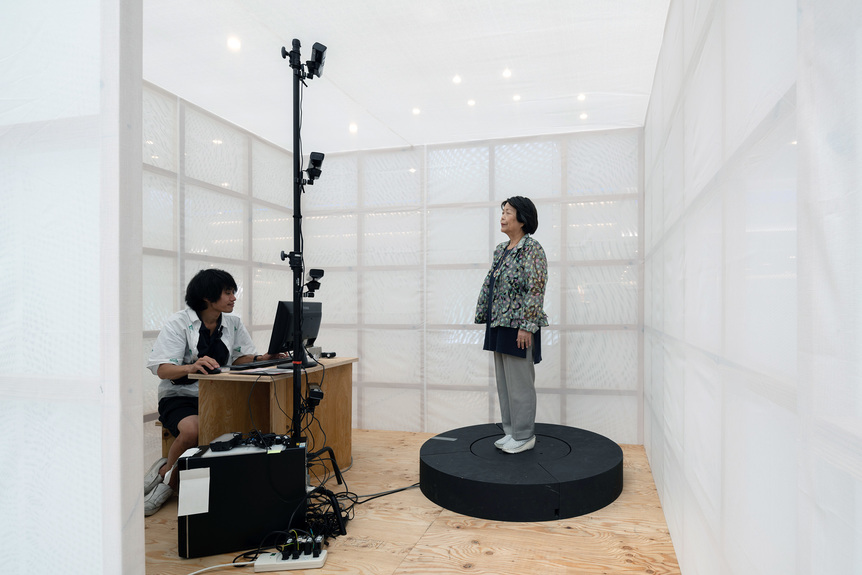
R
E
V N
E
X
T
In Kobe Central Wholesale Market, one of the oldest Japanese markets where fresh food is unloaded directly from ships, MIWA YANAGI turned a 50-meter-long iron platform into a stage. Adapted from Kenji Nakagami’s novel The Wings of The Sun (1984), Yanagi’s performance incorporated a Buddhist dance ritual with a narrative surrounding pilgrimage and a quest for truth. All images by Pamela Wong for ArtAsiaPacific unless otherwise stated.
As one of the earliest hubs first for foreign trade and subsequently for industrialization in Japan, Kobe has long been considered a highly developed cosmopolitan city. Over the past few decades, however, the decline of heavy industries as well as the devastating 1995 Great Hanshin Earthquake have resulted in losses to both the city’s population and vitality. Art Project Kobe 2019, titled “TRANS-” and curated by Sumi Hayashi, asked German artist Gregor Schneider and Kobe-born photographer and stage director Miwa Yanagi to engage with and reinterpret the city’s rich history through a series of site-specific interventions.
Whereas Yanagi’s contributions consisted solely of a three-day program of performances at Kobe’s wholesale market next to the harborfront, Schneider’s newly commissioned installations made up the main, longer-running portion of the project. These works were spread across ten venues (Schneider suggested a route) in the west side of the city, a historic district crowded with old, often deserted, industrial buildings and facilities. Transforming sites including an abandoned hostel, former research institute, and underground passage into disturbing, post-apocalyptic scenes, Schneider led visitors to reconsider the function of these non-placesin the urban environment after the extinction of human civilization.
Departing from the spectacle of international art festivals, Art Project Kobe was deliberately small-scale. The duo-exhibition format enabled each artist to engage in depth with the project’s concept, although it would have been intriguing to see more collaboration between Schneider and Yanagi, as well as more balance in their contributions. Traveling to the different spots also presented a logistical challenge, especially for first-time visitors in Kobe. Two of the venues were private properties with secret addresses; one had to make an appointment before visiting the houses, which precluded the fun of stumbling upon them. Nevertheless, “TRANS-” vividly revitalized these various sites, not only recalling the past of the city, but also speculating on its post-industrial, even post-human, future.
Pamela Wong is ArtAsiaPacific’s assistant editor.
To read more of ArtAsiaPacific’s articles, visit our Digital Library.


















